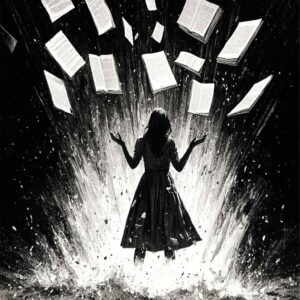Imagery and symbolism can elevate a piece from mere words on a page to an experience that sticks with readers. Understanding and mastering them can transform your writing into something truly memorable.
What is Imagery?
Imagery refers to the use of vivid and descriptive language that appeals to our senses. By painting pictures with words, writers can make scenes come alive, allowing readers to see, hear, smell, taste, and feel what the characters are experiencing. Effective imagery immerses the reader in the story and evokes emotional responses.
How to Use Imagery
To use imagery effectively, focus on the five senses:
- Visual Imagery: Describe what characters see. Use colors, shapes, and contrasts.
- Auditory Imagery: Describe sounds. Consider volume, pitch, and rhythm.
- Olfactory Imagery: Describe smells. Think about fragrances and odors.
- Gustatory Imagery: Describe tastes. Mention flavors and textures.
- Tactile Imagery: Describe touch. Include textures, temperatures, and sensations.
Examples of Imagery in Different Contexts:
- Nature Writing: “The sun dipped below the horizon, casting a golden glow across the rippling surface of the lake. The air was thick with the scent of pine and the distant call of a loon echoed through the forest.”
- Food Writing: “The pie was a symphony of flavors, with its buttery, flaky crust and a filling of tart, crimson cherries. Each bite burst with a sweet and tangy explosion, followed by a hint of vanilla and cinnamon.”
- Descriptive Passages: “Her dress was a cascade of emerald silk, shimmering under the ballroom lights like a field of dew-kissed grass at dawn. The fabric whispered as she moved, the scent of jasmine trailing in her wake.”
What is Symbolism?
Symbolism involves using symbols – objects, characters, figures, or colors – to represent abstract ideas or concepts. Symbols can convey complex ideas succinctly and add depth to a narrative by connecting the reader to the underlying themes of the work.
How to Use Symbolism
To use symbolism effectively, follow these steps:
- Identify Key Themes: Understand the central themes of your work.
- Choose Appropriate Symbols: Select symbols that naturally align with these themes.
- Integrate Smoothly: Introduce symbols in a way that feels natural and not forced.
- Develop Over Time: Allow symbols to gain meaning as the narrative progresses.
Examples of Symbolism in Different Contexts:
- Literary Fiction: In F. Scott Fitzgerald’s The Great Gatsby, the green light at the end of Daisy’s dock symbolizes Gatsby’s unreachable dreams and the relentless pursuit of an ideal.
- Poetry: In Robert Frost’s poem “The Road Not Taken,” the roads symbolize the choices and paths in life. The choice of the less traveled road signifies nonconformity and individual decision-making.
- Film: In The Shawshank Redemption, the rock hammer symbolizes hope and perseverance. Andy’s meticulous chipping away at the prison wall over many years with the rock hammer ultimately leads to his freedom.
Combining Imagery and Symbolism
Imagery and symbolism often work together to create layers of meaning and enhance the reader’s experience. Imagery can make a symbol more vivid, while symbolism can give deeper significance to the images described.
Example of Combined Use:
In William Golding’s Lord of the Flies, the conch shell is a powerful symbol of civilization and order. The vivid descriptions of the conch’s beauty and fragility underscore its symbolic importance. When the conch is shattered, the imagery of its destruction conveys the complete breakdown of order among the boys.
Practical Tips for Writers
- Be Specific: Use precise and concrete details in your descriptions. Vague language weakens imagery.
- Show, Don’t Tell: Instead of saying a character is scared, describe their physical reactions – their heart racing, their palms sweating.
- Use Metaphors and Similes: These can enhance imagery by drawing comparisons that create vivid pictures in the reader’s mind.
- Reinforce Themes with Symbols: Choose symbols that resonate with the main themes of your story. Develop their meaning gradually.
- Balance is Key: Don’t overwhelm your readers with too much imagery or symbolism. Use them to enhance the narrative, not to overshadow it.
Imagery and Symbolism in Real-World Texts
To further illustrate how imagery and symbolism can be woven into writing, let’s explore examples from various genres and contexts.
Example from a Novel:
In Gabriel Garcia Marquez’s One Hundred Years of Solitude, Marquez uses lush imagery to bring the fictional town of Macondo to life:
“Macondo was a village of twenty adobe houses, built on the bank of a river of clear water that ran along a bed of polished stones, which were white and enormous, like prehistoric eggs.”
This description immerses readers in the setting with its vivid visual imagery.
Example from a Poem:
In Sylvia Plath’s “Lady Lazarus,” Plath uses imagery and symbolism to convey themes of resurrection and defiance:
“Out of the ash I rise with my red hair And I eat men like air.”
The phoenix-like imagery of rising from ashes symbolizes rebirth and empowerment, while the color red evokes passion and intensity.
Example from a Song:
In the song “Hotel California” by the Eagles, the lyrics are rich with imagery and symbolism:
“On a dark desert highway, cool wind in my hair Warm smell of colitas, rising up through the air Up ahead in the distance, I saw a shimmering light”
The vivid sensory details create a strong sense of place, while the “shimmering light” becomes a symbol of allure and entrapment.
Example from a Short Story:
In Shirley Jackson’s “The Lottery,” the black box is a symbol of tradition and fate. The description of the box is laden with imagery:
“The black box grew shabbier each year: by now it was no longer completely black but splintered badly along one side to show the original wood color, and in some places faded or stained.”
The worn and dilapidated box symbolizes the outdated and decaying tradition of the lottery itself.
Using Imagery and Symbolism
Imagery and symbolism are essential tools for writers aiming to create rich, engaging, and meaningful texts. Imagery uses descriptive language to create vivid pictures that engage the reader’s senses, while symbolism uses objects and concepts to represent deeper meanings and themes. By mastering these techniques, writers can enhance their storytelling, creating works that resonate on multiple levels and leave a lasting impression on their audience.









